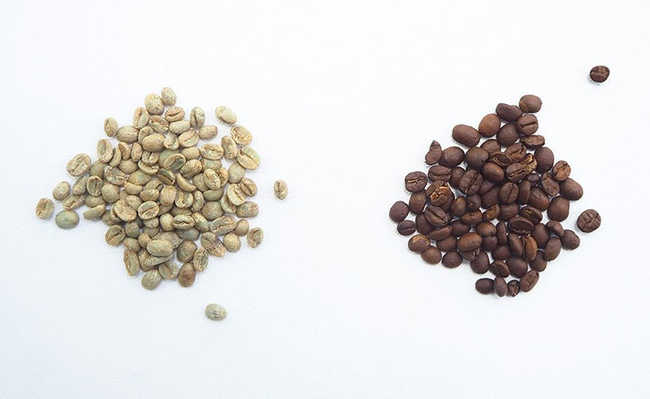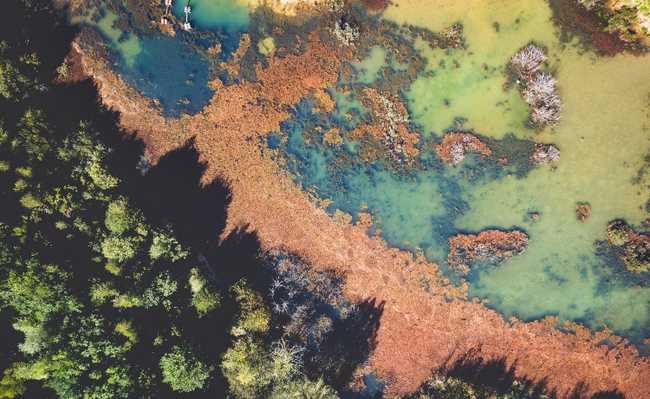Neem, citronella and andiroba repellent is a natural and effective alternative to combat insects
Tired of common repellents and full of toxic chemicals? Discover Repel-Neem: a sustainable product that combines citronella, andiroba and neem. Check your properties

Neem, citronella and andiroba repellent is a 100% natural product, without harmful chemicals and very effective to scare away insects. In addition to repelling insects, it relieves itchiness from bites, there is the option of purchasing the repellent for human use and for gardening and animal use.
The Dalai Lama, Tibet's political and spiritual figure, is credited with saying: "If you think you're too small to change the world, try sleeping with a mosquito in your bedroom." However, even the greatest representative of Buddhism in the world admits in videos that, when the third mosquito approaches to sip its sacred blood, patience is already left for the next incarnation. Just imagine us mere mortals who hate bank lines or the five-second ads of internet videos.
But thank God (or the gods) the natural insect repellent was invented. In flora, there are several species of plants that can help us with this karma collective. Three of them are present in the natural repellent of Preserva Mundi: neem, andiroba and citronella.
neem oil
Neem is a tree native to India with medicinal and therapeutic properties, and may have many of its parts used, such as seeds, leaves and bark. It is used in the pharmaceutical industry and in hygiene and cleaning products. Inside its fruit is a seed that has an almond. This, when crushed and cold pressed, generates neem oil. The resulting mass from pressing can be used as a fungus-controlling fertilizer (or vermifuge in animal feed). In other words, everything from the tree is used.
The oil obtained is rich in fatty acids. It is an effective organic insecticide against more than 200 species of insects such as cockroaches and lice. It has antifungal properties (against 14 types of skin fungi, including mycoses), antibacterial (effective against those causing blackheads and pimples), antiviral, antiseptic (against dandruff and seborrhea) and anti-inflammatory. Relieves itching and redness caused by insect bites. It can be used on pets, it keeps fleas, ticks and scabs away, in addition to providing shine to the pet's fur - just add it to the pet's shampoo and soap. Neem oil is biodegradable and is not bioaccumulative, to learn more visit the article "Neem: the tree with benefits from root to leaves".
Finally, a curiosity: improves the appearance of rusty objects.
Andiroba oil
Andiroba is a plant native to the Amazon and its fruit is a capsule that opens when it falls to the ground, releasing four to six seeds - it is from these seeds that andiroba oil is extracted. The extraction method is fully sustainable when those responsible wait for the fruits to fall naturally.
This oil is also rich in fatty acids such as oleic and linoleic, better known as omega 9 and omega 6, respectively. It has antiseptic, anti-inflammatory, healing, insecticide and other various benefits. Even in the Amazon, its greatest and most traditional use is as an insect repellent and in the treatment of itching and stings caused by these, due to its healing properties. It can also be applied to furniture and wood, preserving and protecting them from termites, in addition to increasing their durability. Mixed with shampoos and creams, it combats hair loss and baldness, and, like Neem oil, treats head lice.
It is not suitable for human consumption by mouth. A study carried out by the Federal Universities of Pernambuco and Pará published that the oral consumption of this oil can negatively affect the functioning of the liver.
citronella
The most famous and popular insecticide. Its use is topical, applied directly to the skin, relieving burning and itching caused by insects. There are no restrictions for use on children, people with sensitive skin or animals. Sprinkling some citronella hydrolate on a pet's collar keeps fleas, ticks and mosquitoes away.
It also brings relief from rheumatic pain. Aromatizing the environment with citronella hydrolate has positive effects on nervousness, anxiety and agitation, due to its calming properties.
What is DEET
The problem with marketed repellent lotions can be summed up in just four letters: DEET, or diethyl-toluamide. This chemical component is present in most repellents on the market, being one of the main substances. DEET acts on mosquito and mosquito antenna sensors, preventing them from recognizing the carbon dioxide released by humans during breathing, keeping them at a distance. However, DEET has a degree of toxicity that can trigger allergic processes, both in the skin and in the respiratory system, in the nostrils and mucous membranes and, in severe cases, it can even cause liver damage. So far, there is no consensus among experts about the real effects that this substance can have on human health. However, a study carried out by scientists in Great Britain proved that the dengue mosquito has already developed a biological resistance to it, thanks to its large-scale use in repellents.
Neem and the Environment
According to the EPA (Environmental Protection Agency) biopesticides registry, cold-pressed Neem oil does not affect birds, bees, plants or terrestrial beings such as earthworms; it is, however, slightly toxic to aquatic organisms. The categories for measuring the toxic potential of an element, according to the EPA, range from 1 to 4, with 4 being the level that presents the least danger - and it is in this category that Neem Oil is found, going to 3 in some cases of possible dermatological allergy.
According to data from laboratory studies, the Lethal Concentration of the product with water is 70.6 to 84.3 ppm (parts per million), after a period of 96 hours for fish.
If we convert these values to more understandable measurements, we get: 0.0706 grams per liter to 0.0843 g/L (grams per liter) - assume that is less than a gram.
For invertebrates in an aquatic environment, after 48 hours the Lethal Concentration is 57.5 to 63.9 ppm (0.0575 g/L to 0.0639 g/L). Specifically for the rainbow trout species the Lethal Concentration is 0.48 ppm.
However, Neem oil is quick to biodegrade, that is, it does not accumulate: within 50 to 100 hours the compost is already broken up when it comes into contact with water or light.
Its major component is azadirachtin (as its scientific name is Azadirachta indica), responsible for 90% of the effects caused on insects and is an indicator of quality standard; therefore, in the experiments, its concentration as a reference is evaluated. For those who don't know, Neem oil is used to control insects, pests and parasites in agriculture and livestock.
According to the National Health Surveillance Agency (Anvisa), only repellents with chemicals based on icaridin are effective against the Aedes aegypti (dengue, zika and chikungunya transmitter). Neem, citronella and andiroba-based repellants do not contain this active ingredient.
discard
It is noteworthy that the improper disposal of oils causes serious environmental impacts, especially in terms of water contamination. Thus, the disposal of vegetable oils in drains and sinks is inadequate, as it can cause several environmental risks and also clog the pipes. Therefore, in case of disposal, look for the correct location for these products; dispose of waste oil in plastic containers and take it to a disposal point so the oil can be recycled. Find the nearest point to discard them.
Discover a series of alternatives that nature offers us to protect our health and practice sustainable consumption. Interested? You can purchase neem repellant at the eCycle Shop and have a light grip on prominent attacks such as the Dalai Lama.










